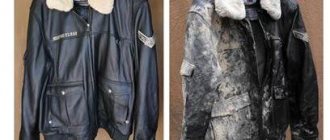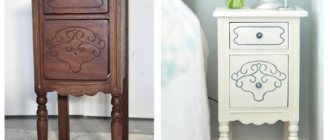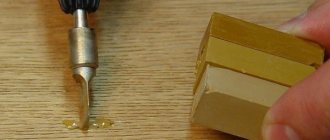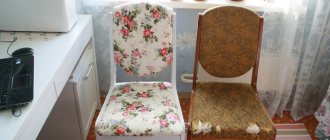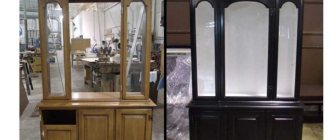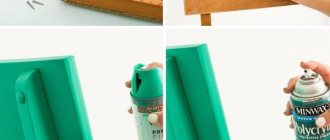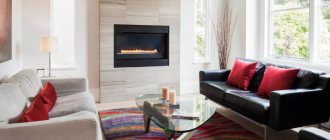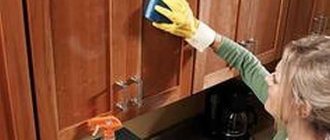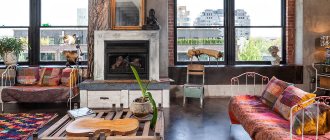carries out painting of any surfaces of carpentry, painting (painting) of furniture, facades and panels, exhibition stands, commercial equipment and other products made of MDF, wood, plastic, metal and glass.
Painting of varying complexity: from ordinary enamel to high gloss polyester based.
We provide technical advice and develop painting technologies to suit any client’s needs.
On our website you can find prices for the main types of finishing.
RETAIL PRICES WITH VAT FOR PAINTING
Matte varnish - 2,400 ₽/m²
Glossy varnish – from RUB 3,900/m²
Matte enamel — 2,990 RUR/m²
Glossy enamel — 4,400 RUR/m²
PRICE LIST FOR PAINTING
The price includes certified paints and varnishes:
SAYERLACK, RENNER, Votteler, VeroMetal, MOBIHEL, SPIES HECKER
The choice of color is carried out according to catalogs: RAL, NCS, PANTONE, WCP.
We can tint the paint to match your sample if there is no suitable color in the palettes.
Painting MDF at home - what are the features?
Before you figure out how to paint MDF facades at home, you should understand what positive and negative aspects this procedure has. The advantages of painting MDF include:
- Obtaining a resistant coating of furniture surfaces to high temperatures. Most often, MDF panels are found in the kitchen, so after painting, you can place hot utensils on it without fear of damaging the surface;
- To change the appearance of objects, giving them a unique coating, pearl, metal, and mother-of-pearl additives can be used to obtain an original design;
- Harmless to health, paints for MDF are made only from safe elements.
But there are also disadvantages to coloring:
- If you choose a low-quality paint, the color will fade under the influence of ultraviolet radiation;
- High cost compared to film coating.
Most often, MDF panels are found in the kitchen, so after painting, you can place hot utensils on it without fear of damaging the surface.
ONLY FROM US YOU WILL GET:
EXCELLENT FACTORY QUALITY
To achieve the highest result, our specialists perform multi-stage preparation (elimination of defects, priming, sanding of workpieces) before painting.
Automotive spray booths COLOR TECH 7000 and NOVA VERTA
Air preparation system with dehumidifier ATLAS COPCO G7 11FF
Polishing on an automatic polishing machine RULMAN
FESTOOL grinding tool
The workshop productivity is more than 2,000 m² per month.
SHORTEST PAINTING TIME
Matte coating - UP TO 5 working days
Glossy finish - UP TO 10 working days
Urgent execution:
Matte coating - UP TO 3 working days
Glossy finish - UP TO 5 working days
FINANCIAL SECURITY
No prepayment
For regular customers, deferred payment is possible
VAT
GUARANTEES
We are responsible for the quality of the services we provide and guarantee 100% results!
We are ready to provide a written guarantee of 2 YEARS for all painting work!
GREAT PRICES
Flexible pricing policy, cost reduction when large volumes are achieved.
WE WORK WITH ORGANIZATIONS AND INDIVIDUALS
Our regular clients: furniture manufacturers, exhibition and construction companies, architects, as well as private companies and individuals.
WE ARE NEAR
Just 9 km from the Moscow Ring Road, Mitino metro station.
Technology for painting furniture facades made of MDF
Painting MDF facades should begin with surface preparation. This is an important stage that requires careful implementation; the final result will depend on it. It consists of removing the old coating and priming.
How to remove old paintwork
To get a high-quality result, work begins by removing old paint.
It is not recommended to paint furniture and other MDF products over the old coating. Due to poor adhesion, eventually the new finish will begin to peel off the surface after a short period of time.
The top gloss is removed, coarse-grained sandpaper is used, this is done in order to obtain a rough surface on which the paint will adhere well and adhesion will become high.
To get a high-quality result, work begins by removing old paint.
Materials and tools
In order to paint MDF objects, it is advisable to use a spray gun; if it is not possible to use it, then the brushes must be of high quality. The room where the painting work will be carried out also requires preparation. It is necessary to select a support that will serve for painting: tables, racks, substrates, etc. A grinding device, respirators, gloves, sponges, and washcloths are required.
In order to paint MDF objects, it is advisable to use a spray gun.
Do I need a primer?
A primer before painting MDF is recommended by experts. It creates a layer that will prevent the new coating from absorbing into the depths of the material itself. The primer solution penetrates into all loose areas of the surface, which prevents the paint from sagging.
To paint laminated furniture, applying a primer solution is not required.
You need to start by degreasing and cleaning the surface from dirt. The step-by-step primer coating technology includes the following steps:
- The first two layers are applied with a primer intended for plastic products. First of all, the ends and hard-to-reach places are processed. Each layer must dry completely before applying the next. The strokes are made perpendicular to the previous layer.
- Application of epoxy primer, can be treated in one or two layers, drying will take 24 hours.
- Finish by applying a vapor-filling primer solution. They have color, so the selection is made according to the color of the furniture; for light colors, a white look is taken. If the surface is smooth, then 1 layer is applied, if not, then they look at the thickness of the object.
After the product has dried, sand it with fine-grain sandpaper. Do not sand with force. The primer must be preserved. If there is a violation of the integrity of the coating, then the defective areas are covered with putty.
Sanding serves to remove the orange peel that appears on the surface of the primer layer.
The primer creates a layer that will prevent the new coating from absorbing into the depths of the material itself.
How to choose the right one
There is no universal enamel that suits all interior items. When choosing, pay attention to the degree of neglect and operating conditions. To find paint for furniture, you need to use the rules.
Types of materials
Interior items made of wood absorb enamel more than plastic or metal facades. For coniferous wood, 2-3 layers of finishing are used; for maple, beech and birch, one is enough. Composite particle boards cannot be painted with solvent-based compounds.
If you need to revive the design of vintage interior items, it is recommended to use varnish. Glazed transparent material will make facades bright, add luxury and gloss. The coating will perfectly hide small cracks and small crevices and emphasize the volume of the carving.
Silicone paint can help change leather or leatherette upholstery. Wicker furniture is painted with acrylic. The original natural gloss of rattan interior items will be returned:
- wax;
- tinting impregnation;
- varnish
If you need paint for metal furniture, then choose acrylic-based options. Compositions with good adhesion adhere perfectly to the surface. A thin elastic film will protect interior items from corrosion. The absence of odor allows the material to be used both outdoors and indoors.
Furniture paints based on acrylic, silicone or latex will help change the design of plastic facades. Chalk types are too expensive to use on budget components. When applying 2-3 layers of enamel, it will be possible to repaint dark facades in a light color.
Place of operation
If the interior items will be in the bathroom or outside in the summer, then use oil emulsions. For corridors, preference is given to abrasion-resistant silicone enamels. To update facades in utility rooms (workshops), you can use both inexpensive organic and aqueous compositions.
To paint surfaces in the kitchen, use a moisture-resistant water-based emulsion (latex-free). Paint for children's furniture should not stink or emit toxic fumes. Facades need to be easily and quickly washed from dirt, so varieties based on acrylic or water emulsion are used.
Re-dyeing
Not all enamels can be applied to painted surfaces. There are species that will “float” and peel off if they are in an unfortunate neighborhood. The manufacturer indicates information about reapplication on the label in the instructions.
For factory coating, it is recommended to apply new furniture paint to cleaned facades. Solvents will help to free the surface from varnish or enamel, generously lubricate the wood and remove the residue with a spatula. The old layer on veneered or laminated structures is removed with sandpaper. A slight roughness is obtained that helps adhesion.
Coatings for interior items are produced in the form of base enamels for light or dark tones. To obtain the desired shade, color is added to the composition. The intensity or pallor of the color depends on the concentration of pigment paste in the furniture paint and the number of layers applied.
Manufacturer
When choosing enamel, pay attention to the manufacturer. Well-known brands value their reputation, so they will not make low-quality and dangerous compounds. Finnish (Tikkurila, Teknos) and Dutch (Dulux) brands have proven themselves well. Among Russian companies, Leningradskiye Krasov and Raduga are popular.
The varnishes that are now used to paint furniture are of the following types:
- Alcohol
- Epoxy
- Alkyd
- Nitrocellulose
- Oily
- Polyurethane
Varnish, unlike paint, creates a surface with higher hardness and durability. The easiest option for painting furniture is acrylic. An undeniable advantage of painting furniture with acrylic is a huge selection of colors. You can also give the furniture both a gloss and a matte effect. Acrylic paint on a water-soluble basis, when dried, is not afraid of moisture and is washable. Paint with the addition of a chalk base has a characteristic fade and will make the furniture look antique. This is an ideal option for painting. The use of water-based paints allows you to paint furniture for a children's room. With the help of modern compositions, furniture can be given effects such as: antique, mother-of-pearl, pearl, metallic, cracolet, leather effect, as well as gold and silver colors.
Our workshop produces professional and high-quality painting of furniture and carpentry of any type. By contacting us, you will be sure that the work will be carried out by true professionals in their field.
Approximate cost of such work:
in the table at the top of the page
